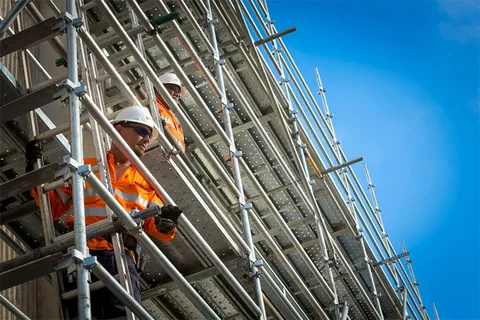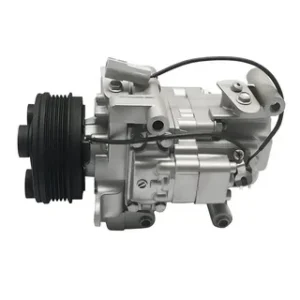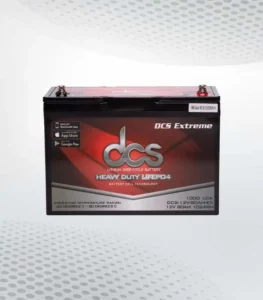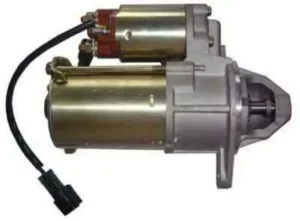In the construction and renovation industries, scaffolding is an essential element that provides support and access to work areas at various heights. Commercial scaffolding is particularly important, as it is often used in larger projects that require additional safety and efficiency measures.
This article will explore the important features of scaffolding, its types, its benefits, and considerations for selecting a scaffolding provider.
Scaffolding: All you need to know
Scaffolding refers to a temporary structure used to support workers and materials during the construction or repair of buildings and other large structures. It provides a safe platform for workers to perform tasks at elevated heights, facilitating easier access to different areas of a project. Scaffolding systems can be designed for various applications, from small residential projects to large-scale commercial constructions.
Key Features of Commercial Scaffolding
Safety Standards:
One of the primary features of Commercial scaffolding is its adherence to stringent safety regulations. In many regions, scaffolding must meet specific safety codes to ensure the protection of workers. This includes features like guardrails, toe boards, and secure fastening methods to prevent falls and accidents. Ensuring compliance with safety standards is crucial for the well-being of everyone involved in the construction process.
Load-Bearing Capacity:
Prime scaffold is designed to support a significant amount of weight, accommodating not only workers but also tools and materials. Load-bearing capacity is a critical feature, as scaffolding must be able to handle the demands of the specific project. Factors like the type of scaffolding, the materials used, and the overall design all contribute to its load capacity.
Modular Design:
Most commercial scaffolding systems are modular, allowing for flexibility and adaptability in various construction settings. Modular scaffolding can be easily assembled, disassembled, and reconfigured to meet the changing needs of a project. This feature makes it easier to transport and store scaffolding components, ultimately saving time and resources.
Access Solutions:
Effective Commercial scaffolding systems provide easy access to elevated work areas. This can include features like ladders, stairways, and access platforms, ensuring that workers can move safely and efficiently between levels. Proper access solutions are essential for maximizing productivity and minimizing the risk of accidents.
Stability and Durability:
Stability is a key feature of scaffolding, particularly in commercial applications where heavy loads and significant height are involved. Scaffolding must be constructed with durable materials, such as steel or aluminum, to withstand the rigors of the construction environment. Properly anchored and braced scaffolding systems are essential for ensuring stability and preventing collapses.
Versatility:
Commercial scaffolding systems come in various types, including frame scaffolding, tube and clamp scaffolding, and modular scaffolding. Each type has its advantages and is suited for different applications. For example, frame scaffolding is often used for general construction, while tube and clamp systems offer flexibility for complex structures. The versatility of scaffolding allows construction companies to select the right type for their specific project needs.
Customization Options:
Many scaffolding companies Nyc offer customization options to meet the unique requirements of a project. This can include adjustments in height, width, and load capacity, as well as specialized features for specific tasks. Customization ensures that scaffolding can be tailored to fit the project’s needs, enhancing efficiency and safety.
Ease of Installation:
A significant advantage of modern Commercial scaffolding systems is their ease of installation. Many systems are designed for quick assembly and disassembly, which is especially beneficial for projects with tight timelines. Scaffolding that can be easily erected and dismantled allows construction teams to focus on their work without unnecessary delays.
Inspection and Maintenance Features:
Regular inspection and maintenance are vital for ensuring the safety and effectiveness of scaffolding. Many scaffolding systems come equipped with features that facilitate easy inspection, such as clear labeling of components and designated inspection points. A well-maintained scaffolding system minimizes the risk of accidents and extends the lifespan of the equipment.
Cost-Effectiveness:
Investing in quality scaffolding may seem costly upfront, but the long-term benefits often outweigh the initial investment. Durable and reliable scaffolding systems can reduce the likelihood of accidents, improve worker efficiency, and minimize project delays. By choosing a reputable scaffolding provider, construction companies can ensure they are getting a cost-effective solution that meets their needs.
Types of Scaffolding
Understanding the various types of Commercial scaffolding can help construction managers choose the most appropriate system for their project. Some common types include:
Frame Scaffolding:
This is the most widely used Prime scaffold type, characterized by pre-fabricated frames that are easy to assemble. It is suitable for most general construction projects.
Tube and Clamp Scaffolding:
This type allows for greater flexibility and adaptability. It consists of vertical tubes connected with clamps, making it suitable for complex structures.
Modular Scaffolding:
Composed of modular components, this type can be customized to fit various project requirements. Its versatility makes it a popular choice for many commercial applications.
Rolling Scaffolding:
Designed with wheels, this scaffolding type allows for easy movement around a worksite. It is often used for tasks that require frequent relocation.
Cantilever Scaffolding:
This system is used when a scaffolding companies Nyc cannot be erected from the ground, such as on overhanging structures. It provides a secure platform while minimizing ground disruption.
Selecting a Scaffolding Provider
Choosing the right Commercial scaffolding provider is critical for ensuring safety and efficiency on a construction project. Consider the following factors:
Experience and Reputation:
Look for scaffolding companies with a solid track record and positive customer reviews. A reputable company will have the expertise to meet your specific needs.
Safety Record:
Investigate the provider’s safety record and commitment to following safety regulations. A strong safety culture is essential for minimizing risks on the job site.
Quality of Equipment:
Ensure that the Prime scaffold offered is made from high-quality materials and meets industry standards. Durable equipment is vital for ensuring safety and reliability.
Customer Service:
Choose a provider that offers excellent customer service, including prompt responses to inquiries and support throughout the project.
Pricing and Contracts:
Compare pricing from different providers, but be wary of prices that seem too good to be true. Ensure you understand the terms of the contract, including any additional fees or costs associated with rental or installation.
Conclusion
Commercial scaffolding is an indispensable tool in the construction industry, providing safety, access, and support for workers at elevated heights. Understanding the important features of scaffolding, including safety standards, load-bearing capacity, and versatility, is crucial for selecting the right system for any project. By choosing a reputable scaffolding provider and ensuring compliance with safety regulations, construction companies can create a secure and efficient work environment that enhances productivity and reduces the risk of accidents.




